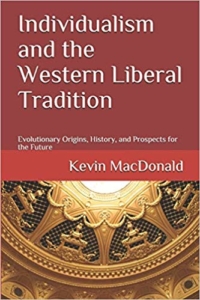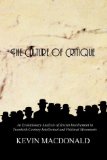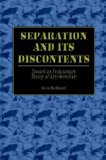
The Jewish love of mockery is famous. Given the chance, they mercilessly mock many things, particularly their enemies, the goyim. Toward that end, they also mock that which is sacred to goyim, such as Christianity and Christian holidays.
For example, one of Freud’s first students, Theodore Reik, found such aggressive themes and hostility toward non-Jews in Jewish humor. Here is an example:
Little Moritz sees an historical film showing the early persecutions of the Christians. During a Roman circus scene in which many Christians are thrown to the lions, Moritz breaks out in sobs and says to his mother: “Look at that poor little lion there, it has not got any Goy to eat!” Under the disguise of duty for the neglected beast is an old hatred and repressed cruelty toward Gentiles. It breaks through here, surprisingly, and reaches the emotional surface.
Brandeis University professor Steven Whitfield shares this relatively innocuous but revealing joke about Gentiles: “Why did God create goys?” “Somebody has to buy retail.”
Whitfield notes that Moritz Saphi “may well have been the first writer to perceive Jewish wit as ‘the defense and weapon of the oppressed,’ a way of getting revenge and a form of stress management.” As an example, he describes a pious Jew on his deathbed who announces that he wants to covert to Christianity. Shocked, his family asks why. “Better one of them should go than one of us.”
Cutting humor about Christianity is at times a staple of Jewish American humor, though Jews have been careful to gauge the reception such humor among Gentiles is likely to receive. One comic who pushed these limits — further than many Jews of the era would have preferred — was Lenny Bruce. In a “funny variation on Jewish delusions and gentile nightmares,” Bruce joked about Presidential contender Barry Goldwater:
So dig. Goldwater lives in Arizona. He did a switch, man. He says, “Frig it. I’ll keep my name and I’ll change my religion.” That was his bit.
That’s weird, you know? Finally we have a man in — that’s going to be Goldwater’s last step: gets in, gets before the T.V. cameras for the acceptance speech, and he rips off the mask and you see the big nose and the semitic look and the spittle coming out and [Goldwater screaming vindictively] “YAHAHAHAAAAAA! WE’LL BURN ALL THE CHURCHES!”
Bruce performed one of his most famous routines in a Chicago nightclub:
You and I know what a Jew is — One Who Killed Our Lord. I don’t know if we got much press on that in Illinois — we did this about two thousand years ago. . . . And although there should be a statute of limitations for that crime, it seems that those who neither have the actions nor the gait of Christians, pagans or not will bust us out, unrelenting dues, for another deuce.
Alright, I’ll clear the air once and for all, and confess. Yes, we did it. I did it, my family. I found a note in my basement. It said: “We killed him . . . signed, Morty.” And a lot of people say to me, “Why did you kill Christ?” “I dunno . . . We killed him because he didn’t want to become a doctor, that’s why we killed him.”
Mel Brooks and Carl Reiner share a milder story about Christ, “The Two Thousand Year-Old Man,” which begins:
You’re a little storekeeper in Nazareth, and I would like to know what happened the day when they crucified Christ on the mountain. Did you know Christ?
Yes; thin, thin, nervous — wore sandals. Came in the store, didn’t buy much, mainly water, wanted water — so I gave him water. Look! You have a business. You can’t always make a sale. So when people want water, you give them water. But one thing I have to admit. He was a bit of a troublemaker. He beat up a couple of rovs on the steps of the shul — and you know you can’t do that! But they didn’t have to nail him up. They could have given him a severe lecture. I didn’t agree with such a severe punishment. Oh, such a terrible day! All that yelling and screaming up on the mountain. I tell you it was very upsetting. In fact, it got so bad, I had to close up the store.
The authors of a book on Jewish humor relate a joke that is a good summation of three Jewish themes relating to Gentiles: love of the shiksa [non-Jewish woman], social acceptance, and Gentile gullibility:
Three Jews who have recently converted to Christianity were having a drink together in a posh WASP country club. They started talking about the reasons for their conversions.
“I converted out of love,” said the first, and noticing the dubious looks on his friends’ faces, he continued: “Not for Christianity, mind you, but for a Christian girl. As you both know, my wife insisted that I convert.”
“And I,” said the second, “I converted in order to rise in the legal system. You probably know that my recent appointment as a federal judge may have had something to do with my new religion.”
The third man spoke up: “I converted because I think that the teachings of Christianity are superior to those of Judaism.”
“Are you kidding?” said the first man, spitting out his drink. “What do you take us for, a couple of goyim?”
This joke, Professor Whitfield writes, “reveals more than a hint of contempt toward a sister monotheism. It slyly stabs at the mental inferiority ascribed to non-Jews, whose religious creed is too preposterous to be credible.”
This sentiment is in evidence in another Jewish joke he cites:
Three recent converts to Christianity were being tested.
“What is Easter?” the first man was asked.
“Easter is when Jesus was born.”
“Go back and study,” they said to him. “Next!”
“What is Easter?”
“Easter,” said the second man, “was when Jesus split the Red Sea.”
“I’m sorry,” he was told. “You’ll have to do some more studying. Next!”
“What is Easter?” the third man was asked.
“Easter,” he said tentatively, “was when Christ was reborn.”
“Excellent. Please continue.”
“Well,” the man said cautiously, “he was in the grave for three days. . . .”
“Very good; and then?”
“And then he came out, saw his shadow — and went back in!”
Finally, we arrive at what must be the most blatantly hostile and offensive portrayal of Christmas ever found in the mainstream American media. The creators of the animated series South Park concocted a Christmas character to replace Santa. This new character is “Mr. Hankey the Christmas Poo,” an animated human feces. Mr. Hankey was introduced in a 1997 episode that showed the young Jewish boy Kyle brushing his teeth. Mr. Hankey, wearing a Santa hat, jumps out of the toilet bowl and sings a song about Santa and Christmas. The starkest comment in the scene comes when this animated feces writes “Noel” in excrement on the mirror. (This early version can be viewed here and a long discussion I did of the topic here.)
One hardly knows what to make, then, of recent examples where young Jews really push the envelope on exposing their own power or even crimes, all done with cutting humor.
For instance, the whole question of Jewish power in Hollywood and in TV is a touchy one. In his excellent study The Jews of Prime Time, David Zurawik asks, “What is ‘too Jewish’ yet not Jewish enough?” Answer: “the strange history of Jewish characters on prime-time network television.” The incongruence to which he refers comes from the fact that nearly all the top TV executives and producers were Jewish, yet they were ambivalent about portraying their own high status or that of Jews in other important areas of American life. To illustrate, he begins with an interview with Jewish comedian Al Franken (now a Senator from Minnesota). Zurawik’s direct access to Franken and TV mogul Brandon Tartikoff provides an inside view of Jewish thinking on the “too Jewish” issue.
Tartikoff was concerned about a sketch on NBC Entertainment’s highly popular Saturday Night Live show, in which actor Tom Hanks plays a fictional emcee of a game show called “Jew/Not-a-Jew.” Alluding to Laverne & Shirley co-star Penny Marshall, Hanks asks, “Okay, panelists, Jew or not a Jew?” Tartikoff allowed that it was funny “but was it anti-Semitic?” After agonizing over it for a week, he gave the skit a green light, whereupon his phone rang off the hook on Sunday morning “with calls from colleagues, many of whom were Jewish.” The most troubling call, said Tartikoff, came from his mother. “I cannot believe it. I’m embarrassed to call you my son. This Jew/Not-a-Jew sketch was the most anti-Semitic thing I’ve ever seen.”
While Tartikoff may have erred in this instance, there were other times he pulled the plug because a sketch or show was “too Jewish.” Why did Tartikoff and other Jewish executives so often react this way? To Franken, it was because “there’s a feeling among some Jews that ‘Hey, let’s not get too out front in our Jewishness, because people might not like it.’ . . . ‘Hey, let’s not . . . draw fire. There’s a lot of us in this business, let’s not call attention to it, you know.’” This may well explain why so many Jewish network executives and TV programmers shaded or avoided any connection between Jewish identity and what characters said or did on so many shows. In fact, Tartikoff in 1991 nearly canceled Seinfeld after just one episode for being — surprise — “too Jewish.”
Why, then, did the heavily Jewish Saturday Night Live crew ever create — let alone run — a skit that makes fun of the prominent role Jews played in the financial meltdown? The skit spoofs Jews such as Herbert and Marion Sandler, Congressman Barney Frank, and even George Soros. Here’s the unadulterated original version.
Who, exactly, are they mocking? True, everyone in the skit is by definition a buffoon, from the character of President Bush to the Yuppie scum so totally self-absorbed in their own lives.
Is the real target, however, the gentile audience which comprises the victim class in all of these Jewish financial crimes? After all, Jews are no doubt highly cognizant of the fact that co-religionists such as Bernie Madoff, Ivan Boesky, Michael Milken and literally hundreds more Jews have been involved in these financial crimes.
Thus, is the joke here in part due to the assumption that the goyim watching the skit will not really understand who has done what and to whom? Further, isn’t there more than a suggestion that the skit really mocks goyim because even if they have figured out the ethnic identity of the bulk of these scammers, they still won’t or can’t do a damn thing?
Now comes an even more blatant example of this kind of humor. The problem is, I don’t really know who should get the credit. It’s a parody newscast from something called Onion News Network, an offshoot of the original newspaper of that name. At this point, I can’t say to what extent it or this particular skit is Jewish-influenced, so I’ll wait for further comment on that.
Still, the ADL has yet to issue a condemnation of the skit, something one would expect had non-Jews created a blatantly anti-Semitic image. Or maybe Nathan Rabin had a hand in it. He’s the head writer at the A.V. Club, the entertainment-oriented sister publication to The Onion. Again, I’d like to hear more about this from readers.
In any case, the title of the parody in question is “Overcome Stress By Visualizing It As A Greedy, Hook-Nosed Race Of Creatures.” Now to someone of my generation, “hook nosed” is an unambiguously negative reference to Jews. We know this because Jewish groups are constantly telling us NOT to think of Jews in this way. To an older generation, such images are right out of Der Sturmer, the Nazi propaganda magazine:



Have a look now at the image, first a frame from the video, then watch the short video itself.

Overcome Stress By Visualizing It As A Greedy, Hook-Nosed Race Of Creatures
I must say, the set is professional looking and faux-hosts “Jim Haggerty” and “Tracy Gill” are indistinguishable from the real thing. Under the banner “STRESS RELIEF NOW!” we read about today’s guest: Expert Christine Eckard Shares Stress-Relief Exercises.
On a surface level, the humor succeeds because the hosts and guest are so typical of today’s superficial TV personalities and therapy experts. They’re also very goyish (the name Christine, for example, amplifies this).
As we go deeper, however, it gets more difficult to read. For starters, what they are showing is quite accurate. So how does using the truth perform as part of the humor? I don’t think the skit is making fun of Jews for their appearance or behavior. Rather, I think the writers are making fun, first, of their goy audience. “Look, we’re showing you explicitly what Jews are, yet you’re still too stupid to see it. What can’t we do and not get away with? There is no limit to your goyische kopf stupidity.”
More pointedly, however, I think the Jews behind the skit (again, I have to assume this because I can’t imagine non-Jews ever daring to create images such as these) are getting a thrill out of scaring and offending older Jews. It’s a very adolescent thing — to scandalize your parents. For a young Jew in America today, where physical safety has also been guaranteed and financial or job prospects never a true worry, what can beat the frisson of excitement associated with tweaking the noses of the goyim with some secrets about the tribe and in the process really upsetting mom, dad and uncle Bernie down at the country club in Miami?
For instance, our goyische “expert” tells her audience to
Imagine my money-related stress as the most disgusting terrifying creature I can think of. I’d like to imagine an ugly, greasy little creature with a hooked nose and oily black hair. I call him the Grabbler because he’s a greedy little monster who wants to grabble up all your money. Now think of all the problems. He invented interest rates like the ones on your credit card. He’s taking the jobs because Grabblers only hire their own kind.”
That’s hitting a little too close to home, isn’t it, messieurs Madoff, Blankfein and Soros?

Lloyd Blankfein, CEO of Goldman Sachs
The next part clearly mocks goyim for our penchant of sticking our heads in the sand rather than face up to real problems. Better, it mocks us because rather than face our problems and deal with them, we resort to puerile tactics such as shifting our focus to happy, sappy things. Like, say, rather than dealing with the fact that a gang of Black punks has just knifed your neighbor’s 16-year-old, you light candles, hug each other and visualize a world filled with nothing but love. Goyim can be really, really stupid.
In the case of this video, our expert beseeches us to imagine yourself in a peaceful field full of lilies. Meanwhile, the banner at the bottom of the screen reinforces this: “Picture Yourself In A Quiet Space Free Of Grabblers, Such As A Field Or A Church.”
Get it? A church is where goyim go.
The expert than asks us to expunge idea that grabblers are scheming or trying to rob you. The power of positive thinking. How utterly stupid. But of course a grabbler by nature schemes and tries to rob people. You’ve just imagined away any defense from these grabblers. I guess that’s funny to some people.
Therapist Christine moves next to “Blabblers,” “people who love to argue and complain in a nasal voices. They’re always lurking like rats.” Here’s the image:

The first thing that came to my mind when hearing the world “blabbler” was an image of Barbra Streisand who is affectionately known as “Babs.”
The mock interview ends with host Haggerty plugging guest Christine Eckard’s latest book. We then get a close-up of the title: The Solution: Kill all the Grabblers.
So our expert with the German-American sounding name, Christine Eckard, has genocide in her eyes, quite appropriate for anyone with German blood. Ha ha ha.
As I’ve said, there is a lot going on in this short video, and I’m far from reaching any conclusions.
A Google search turns up a few hints. A site called Subverted Nation, for one, argues that
to your conscious mind, it all sounds just as silly as it’s presented. The problem is that your subconscious mind only sees things in a literal sense. It does not have the ability to reason, and it is completely unable to use any logic whatsoever. So, when you are told to visualize these problems simply fading away, and replacing the imagery with something soft and sweet, this is exactly what your subconscious mind does.
It’s very subtle, but this kind of neuro-linguistic programming works extremely well, and your enemy is seasoned in this practice in ways many of you are unable to imagine. These are the kinds of techniques taught in the secret mystery schools to all of their kind. This is the stuff you often miss, that is playing a vital role in their battle for your mind, bodies, and souls.
This writer also argues that “90% of the people on planet Earth do not know who this enemy really is, they do not recognize the “grabbler” as the Jew, and they are utterly clueless as to how serious of an issue this really is.” I simply can’t agree with that. I refuse to believe that anything close to such a majority of fellow Americans are clueless about such stereotypes about Jews. Could it be possible? Again, I’d like to hear from readers.
An acquaintance seemed to think it possible, though. He told me that “Most people watching the ‘Grabbler’ sketch don’t see it with our [Jew-wise] eyes. Indeed, one could come up with a PC, philo-Semitic reading of the spoof: it reveals that all gentiles have anti-Semitic fantasies and thus are in need of sensitivity re-education.” If he’s right about this reading, then we’re in deeper trouble than I had realized.
In closing, let me proffer one last hypothesis for the Jewish medium known as television for offering negative but fairly accurate depictions of Jews: Could these Jews be crying out to get caught? Naaaaawwww.

![]()













